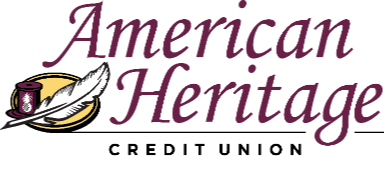The Young Adult Financial Wellness Starter Kit

Now that we’ve created the Financial Wellness Dictionary for young adults to educate themselves on the most relevant terms to begin their financial wellness journey, the next step is to establish yourself at a financial institution. In today’s blog, we look at a handful of starter accounts, products, and services young adults should have or start familiarizing themselves with to continue towards financial independence.
Accounts
Let’s start with the product basics. There are two types of accounts that are essential to financial independence – Savings and Checking Accounts. These accounts will help you grow your savings, make daily purchases, and pay off bills and debt. By starting with these primary accounts, you are building the foundation for any additional product or service we discuss. Actively managing these accounts will help you not only budget your finances, but will also help you fight fraud and avoid penalties.
Savings Account
There are many types of savings accounts, all with varying benefits and purposes. Credit unions refer to these accounts as “share” accounts because of your share, or unit of ownership, in the credit union. Opening a primary savings account will help you define your savings goals and encourages you to budget your income accordingly. When opening a savings account, it’s important to choose one that will give you more convenient access to your funds while offering a higher interest earned each month.
Other types of savings’ options include:
- A savings account dedicated to your Emergency Fund
- Certificates and IRAs for long-term growth
- Investment and Retirement Planning is important to your future self’s financial independence. Financial advisors and other licensed professionals can give you guidance on how to build retirement savings through investments and your 401k account, which continue to grow with your contributions.
Checking Account
A personal checking account allows you to make deposits, withdrawals, and pay bills. You can connect a debit card to this account to carry out transactions. You can also link a direct deposit to this account by supplying your employer with your account number and your financial institution’s routing number. There are also many different types of checking accounts with different benefits and features. An ideal checking account for young adults would be a Free Checking Account, which has a no minimum balance requirement and no monthly fees.
Products you can connect to your checking account include:
- Debit Card – A safer and more convenient way to pay now than cash. This card draws funds directly from your checking account.
- ATM Card – A card that is not used for purchases but can be used to withdraw your funds from an ATM.
- Digital Services, like automatic bill pay and transfers, can help you effectively manage your expenses recurring expenses and payments.
Digital Services
Your financial institution’s digital services can provide a unique and more convenient banking experience that removes the need to travel to a branch to manage your finances. The most common banking transactions can be performed through a variety of digital options. For example, American Heritage’s Digital Services include an Mobile Teller App, Online Teller, and Video Advisor (VANA) to help members complete many financial to-dos from wherever they may be.
Digital Services most financial institutions offer include:
- Mobile and Online Banking for account management
- Electronic transfers and automatic bill pay
- Electronic statements
- Card controls and alerts
- Mobile wallets
Loans
Once you set up your primary accounts and learn how to effectively manage them, you will more than likely need to afford life expenses that cost more than your immediate income and savings. Whether you’re shopping for a vehicle, planning a vacation, or looking to fund part of your educational expenses, a loan could help cover those costs.
Borrowing funds is a big responsibility. Any type of borrowing should be taken seriously. Ask yourself important questions like ‘how is my credit’ and ‘what kind of financing do I really need?’ to help you make the best decision for your financial circumstances.
Auto Loan
For most shoppers, financing a vehicle will be one of the biggest yet necessary financial lifestyle decisions you will make. It’s essential to find a financial lender that offers a reasonable monthly payment you can afford and an appropriate loan term for you to pay the loan back. It’s also worth weighing your options as to whether you should buy or lease your vehicle, which can have a big impact on your budget and financial expectations.
Understand your monthly budget. Know an estimated amount you can afford to pay each month towards your vehicle loan before you make your decision. Auto insurance, vehicle maintenance, and inspections are additional expenses to factor into your monthly budget when estimating what you can afford.
Personal Loan
A personal loan, like an auto loan, is a lump sum borrowed from your financial institution, which must be paid back over a set amount of time in fixed monthly installments, with interest. Personal loans can be used for many larger purchases, like debt consolidation, vacations, weddings, and much more.
These types of loans are unsecured with no collateral, which are assets connected to a loan which can be taken if the loan is not repaid. As a result, unsecured loans will usually have higher interest rates than a secured loan. Also, when seeking out a personal loan, look out for early payoff penalties, as this type of fee can penalize borrowers who are making larger loan payments to pay back the loan sooner. Researching different financial institutions and lenders can allow you to compare APRs and term lengths, which will help you calculate the monthly payment that fits into your budget.
Credit Card
If you are looking for a versatile tool to keep handy for more common expenses, a credit card could be a great option. Credit cards are a way to build your credit score and earn rewards. They differ from debit cards in that credit cards allow you to make a purchase as a charge against a line of credit, rather than your available cash balances.
When comparing different credit cards, you should look at a variety of benefits and factors that will influence how you use your line of credit.
If you are looking for a card with lower payments or plan to make a larger purchase, a 0% APR (Annual Percentage Rate) credit card could work for you. A 0% introductory APR means you won’t be charged any interest on your purchases within the timeframe determined by the offer. After the introductory rate ends, your rate will switch to the standard APR and any purchases made after the promotional period will have this new rate.
If you are looking to earn rewards and bonuses on your everyday purchases, a rewards card could be right for you. With a cash rewards card, you can take advantage of special promotions on purchases like gas, dining, or travel. Most cash back offers range from 1%-5%, which may not seem like a lot on small transactions, but shopping strategically can help you earn extra on every purchase. The cash back you earn can be used to pay down the balance due for that card or you can choose to deposit the funds into an account.
Some rewards cards offer points for each purchase you make. These cards offer a set number of points per every dollar you spend, with many cards offering special introductory offers when you spend a specific amount of money in a set time frame. Depending in the type of rewards card, the points you earn can be used to redeem merchandise, gift cards, and bonus miles for flights and travel.
With any type of rewards card, you want to look for a card that offers a competitive rewards rate for the things you already shop for and a low annual fee you will pay each year. American Heritage offers credit cards with cash rewards and ScoreCard® Rewards points, both with no annual fees. Regardless of which type of card you select, understanding how interest is calculated is crucial in avoiding late fees, boosting your credit score, and maintain healthy financial habits.
Your Partner for the Future
These products and services have laid the foundation for the next phases of financial independence. You can learn more about building your credit, healthy borrowing habits, effective financial management, and more on our Learning Center. Our self-service platform offers on demand blogs and educational content for you to continually brush up on important topics and prepare for future financial decisions.

